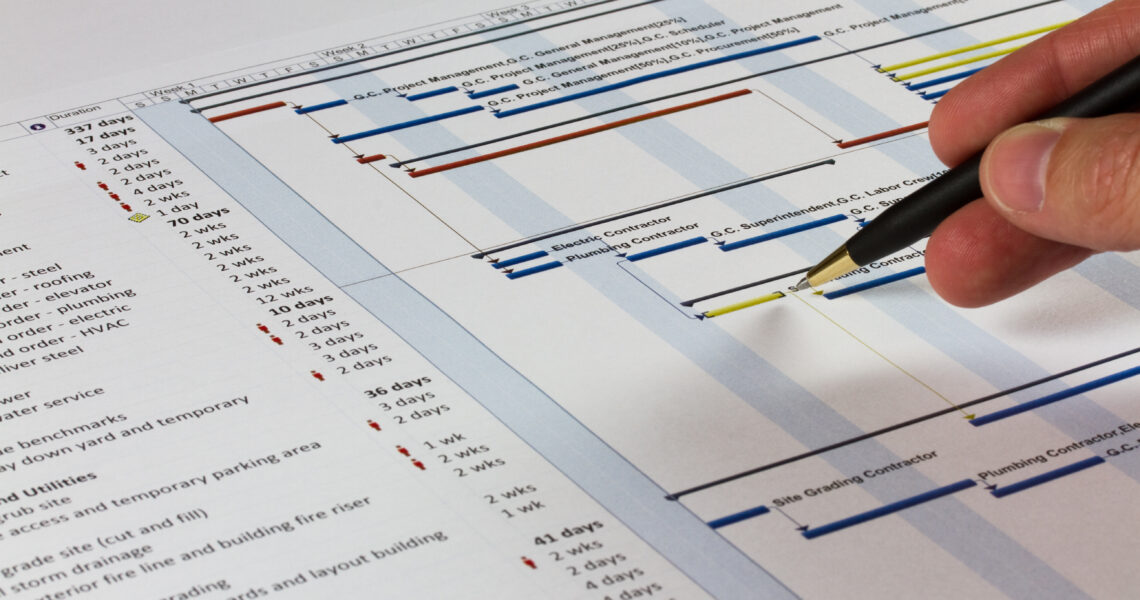Effective document tracking in construction management is paramount for project success. This discussion explores the significance of document tracking in construction projects, emphasizing its role in maintaining project timelines, ensuring regulatory compliance, mitigating risks, and enhancing collaboration among stakeholders. Through the utilization of digital tools and proper procedures, document tracking can streamline workflows, reduce errors, and facilitate informed decision-making throughout the project lifecycle. Case studies and examples highlight the tangible benefits of robust document tracking systems, demonstrating its indispensable nature in modern construction management practices.
Here is an outline for this discussion:
- Introduction
- Overview of construction management
- Importance of documentation in construction projects
- Introduction to document tracking
- The Role of Document Tracking in Construction Management
- Ensuring regulatory compliance
- Maintaining project timelines
- Mitigating risks
- Facilitating communication and collaboration
- Maintaining Project Timelines
- Importance of timely access to documents
- Impact of delays on project schedules
- Document tracking for monitoring progress
- Ensuring Regulatory Compliance
- Navigating complex regulatory requirements
- Document tracking for compliance documentation
- Importance of accurate record-keeping
- Mitigating Risks
- Identifying and managing risks in construction projects
- Document tracking for risk assessment and mitigation strategies
- Case studies illustrating the consequences of inadequate document tracking
- Facilitating Communication and Collaboration
- Challenges of communication in construction projects
- Document tracking for improved collaboration among stakeholders
- Utilization of digital tools for real-time updates and notifications
- Streamlining Workflows
- Efficiency gains through digital document tracking systems
- Automation of document management processes
- Integration with project management software
- Case Studies and Examples
- Successful implementation of document tracking systems
- Quantifiable benefits observed in construction projects
- Lessons learned and best practices
- Challenges and Limitations
- Technological barriers to implementation
- Resistance to change among stakeholders
- Data security concerns
- Future Trends and Innovations
- Advances in document tracking technology
- Integration of AI and machine learning
- Potential impact on construction management practices
- Conclusion
- Recap of the importance of document tracking in construction management
- Key takeaways for practitioners
- Call to action for embracing digital solutions for improved project outcomes
As it’s been said before, you should be closing the project starting the very first day on the project. From the very beginning, the project management team should be building the folders and processes to track all documents. All documents and information should be categorized and saved on a local drive and shared with the team. The documentation process is a very underappreciated part of construction management, but it should be a pillar of your daily processes.
As an introduction, Construction management encompasses the orchestration of various resources, activities, and stakeholders to bring construction projects to fruition. Within this complex ecosystem, documentation plays a pivotal role in ensuring transparency, accountability, and efficiency. Document tracking emerges as a crucial aspect of construction management, facilitating regulatory compliance, adherence to project timelines, risk mitigation, and seamless communication among stakeholders.
So let’s look at the roles of Document Tracking in Construction Management:
- Ensuring Regulatory Compliance:
- Construction projects are subject to a myriad of regulations and standards, necessitating meticulous documentation to demonstrate compliance.
- Document tracking systems enable the organization, retrieval, and management of regulatory documents, ensuring adherence to legal requirements.
- Accurate record-keeping is imperative for demonstrating compliance during audits and inspections.
- Maintaining Project Timelines:
- Delays in construction projects can incur substantial costs and reputation damage.
- Timely access to pertinent documents is essential for decision-making, problem-solving, and maintaining project momentum.
- Document tracking facilitates the monitoring of project progress, identifying bottlenecks, and addressing issues promptly to prevent schedule overruns.
- Mitigating Risks:
- Construction projects are inherently fraught with risks, ranging from safety hazards to contractual disputes.
- Document tracking aids in identifying, assessing, and managing risks by providing visibility into project documentation.
- Proactive risk management strategies supported by robust document tracking systems mitigate the likelihood and impact of potential risks.
- Facilitating Communication and Collaboration:
- Effective communication and collaboration are vital for aligning stakeholders’ objectives and ensuring project success.
- Document tracking enhances collaboration by providing a centralized repository for project-related information, fostering transparency and accountability.
- Digital tools integrated with document tracking systems enable real-time updates, notifications, and version control, facilitating seamless communication among dispersed project teams.
Maintaining Project Timelines:
Timely access to documents is indispensable for maintaining project timelines in construction management. Construction projects operate on tight schedules, with numerous activities dependent on timely access to relevant documentation. Delays in accessing critical documents can impede decision-making processes, resulting in cascading effects on project progress. Document tracking systems streamline document retrieval processes, ensuring that stakeholders have access to the information they need when they need it. By centralizing document management and implementing efficient tracking mechanisms, construction managers can proactively address potential delays and keep projects on track.
Ensuring Regulatory Compliance:
Navigating the complex landscape of regulatory requirements is a significant challenge in construction management. Construction projects must comply with an array of local, state, and federal regulations, covering areas such as building codes, environmental regulations, and workplace safety standards. Failure to comply with these regulations can lead to costly fines, project delays, and reputational damage. Document tracking plays a crucial role in ensuring regulatory compliance by facilitating the organization, storage, and retrieval of compliance-related documents. By maintaining accurate and up-to-date records, construction managers can demonstrate compliance during regulatory inspections and audits. Document tracking systems also provide visibility into compliance status, enabling proactive measures to address any gaps or deficiencies.
Mitigating Risks:
Construction projects are inherently risky endeavors, with numerous factors that can impact project outcomes. These risks can manifest in various forms, including safety hazards, design flaws, material shortages, and contractual disputes. Effective risk management is essential for mitigating these risks and minimizing their impact on project success. Document tracking systems support risk management efforts by providing a centralized platform for identifying, assessing, and managing risks. By maintaining comprehensive records of project documentation, including contracts, permits, change orders, and safety reports, construction managers can identify potential risks early in the project lifecycle and implement mitigation strategies to address them proactively. Document tracking systems also enable real-time monitoring of risk status, allowing construction managers to track mitigation efforts and adjust strategies as needed.
Facilitating Communication and Collaboration:
Effective communication and collaboration are critical for successful construction project delivery. Construction projects typically involve numerous stakeholders, including owners, architects, engineers, contractors, subcontractors, and regulatory agencies. Coordinating the activities of these stakeholders requires clear and efficient communication channels. Document tracking systems facilitate communication and collaboration by providing a centralized repository for project-related information. By storing all project documentation in a single location, document tracking systems ensure that stakeholders have access to the information they need, when they need it. This helps to prevent misunderstandings, reduce errors, and improve overall project coordination. In addition, document tracking systems enable real-time updates and notifications, allowing stakeholders to stay informed of project developments and changes.
Streamlining Workflows:
Efficient workflow management is essential for maximizing productivity and minimizing project delays in construction management. Construction projects involve numerous tasks and activities that must be coordinated and sequenced to ensure timely completion. Document tracking systems streamline workflows by automating document management processes and integrating with project management software. By digitizing document workflows, construction managers can eliminate manual tasks, reduce errors, and improve overall efficiency. Document tracking systems also facilitate collaboration by providing a centralized platform for sharing and reviewing documents. This helps to ensure that all project stakeholders have access to the information they need to perform their roles effectively.
Case Studies and Examples:
Several case studies and examples illustrate the tangible benefits of robust document tracking systems in construction management. For example, a large-scale infrastructure project implemented a digital document tracking system to streamline document management processes and improve collaboration among project stakeholders. As a result, the project was able to reduce document retrieval times, minimize errors, and enhance overall project efficiency. Another example involves a commercial construction project that used a document tracking system to ensure compliance with building codes and regulations. By maintaining accurate records of compliance-related documents, the project was able to demonstrate regulatory compliance during inspections and audits, avoiding costly fines and delays.
Challenges and Limitations:
Despite the numerous benefits of document tracking systems, implementation challenges and limitations exist in construction management. Technological barriers, such as compatibility issues and data security concerns, can hinder the adoption of digital document tracking systems. Resistance to change among stakeholders, including project team members and external partners, may also impede the implementation process. Additionally, construction managers must be mindful of data privacy regulations and ensure that sensitive information is adequately protected.
Future Trends and Innovations:
Looking ahead, several future trends and innovations are poised to shape the evolution of document tracking in construction management. Advances in document tracking technology, such as artificial intelligence and machine learning, are enabling more sophisticated document management capabilities, including automated document classification, natural language processing, and predictive analytics. Integration with emerging technologies, such as building information modeling (BIM) and Internet of Things (IoT) sensors, is also enhancing the utility of document tracking systems in construction projects. These innovations have the potential to revolutionize construction management practices, enabling more efficient document workflows, better decision-making, and improved project outcomes.
Conclusion:
In conclusion, document tracking plays a critical role in construction management by ensuring regulatory compliance, maintaining project timelines, mitigating risks, and facilitating communication and collaboration among stakeholders. Timely access to documents, accurate record-keeping, and streamlined workflows are essential for successful project delivery. Despite challenges and limitations, advances in technology and ongoing innovation are driving the evolution of document tracking practices in construction management. By embracing digital solutions and leveraging emerging technologies, construction managers can optimize document management processes, enhance project efficiency, and achieve better outcomes.
Key takeaways for practitioners include the importance of implementing robust document tracking systems, maintaining accurate and up-to-date records, and fostering a culture of collaboration and communication among project stakeholders. Ultimately, the adoption of digital document tracking solutions is essential for navigating the complexities of modern construction projects and achieving success in an increasingly competitive industry.





